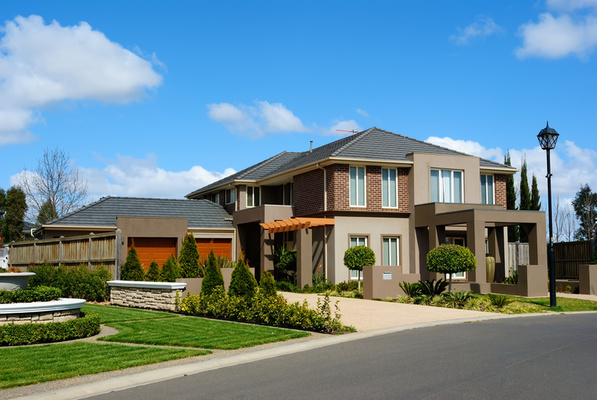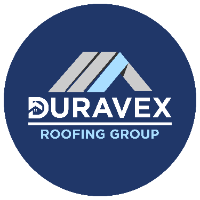
Choosing the Ideal Roofing Solution for High Wind Areas
Wind can be strong and sudden in the southeast of Queensland. Summer storms surprise us consistently, and the results can be pulverizing for your home, especially your rooftop, as it endures the worst part of the outrageous climate.
You'll need to think about the best roofing for high-wind areas if you're building in southeast Queensland or replacing an existing roof. However, the design of roofing varies from house to house due to its technical nature. That doesn't even take into account the other options for materials!
It is essential that you are aware of the steps involved in matching a wind-resistant roof to your ideal design.
Enduring outrageous climate occasions
When it comes to understanding the components of the most durable and wind-resistant material, we need not venture beyond the elevated regions of Australia, renowned for their formidable winds. Although the tropics are generally calm, cyclones that traverse Northern Australia can produce winds of up to 300 kilometers per hour and cause unimaginable destruction.
So, how are the roofs held in place? A simple tie-down rod is all that is required. After the destruction caused by Cyclone Tracy, steel rods known as tie-down rods were introduced. These rods "tie" the roof down by running from the roof into the walls of a house and down into its foundations. They work best on Queenslander-style homes with traditional steel roofs, but they can be modified to work with a variety of roof styles.
Materials
The strongest and longest-lasting options for roofing are corrugated steel and tiles. However, strong winds distinguish them. Both roofs will withstand the wind without major issues if the design is sound. However, the problem is not always caused by the wind itself; more regularly, it's the flotsam and jetsam quickly passed up the breeze that causes all the harm. Because roofing tiles are more brittle and susceptible to cracking, chipping, and even dislodging, most of the time, steel will be able to withstand the impact of flying debris more effectively than roofing tiles will. Steel, on the other hand, will be more expensive to repair. At the point when you want to fix a steel rooftop, you frequently need to lift whole sheets to supplant them, which is troublesome and tedious. On the other hand, damaged tiles can be simply replaced to repair tiled roofing. Naturally, once you have decided on your material, you will need to think about things like the thickness of the base metal and the profile of the roof, which will require some advice from experts.
Structure
When choosing a structure for your roof, look, cost, and utility are all important factors to take into account in addition to wind. In any case, your rooftop should be good for a reason, so you must give a serious idea of such breezes your home is probably going to experience, and how well it can endure them. Gable roofing generally does not perform as well as more modern alternatives do in high wind conditions.
In fact, a roof with a variety of slopes is the best option for areas with high wind speeds. One example is a hip roof, which distributes wind pressure more evenly by using four different slopes rather than absorbing excessive sustained pressure like gable roofs do. Hip roofs offer more benefits than just wind resistance. They likewise look perfect, and they loan an advanced edge to places of any age and plan. If the hip structure is designed with steel and tiles in mind, it will also work well with them.
So, why do gable roofs continue to be the most popular style? It's easy: price. The disadvantage of hip roofs and roofs with varying slopes is that they require additional design work, which costs money and takes more time.
Brands
Most roofing brands don't advertise their wind resistance, so it's hard to pick the best roofing brands for areas with high winds without some inside information. Find a roofing company that installs BlueScope steel, as this is our recommendation. BlueScope makes some of the most long-lasting roofing materials on the market and is at the top of Australia's steel manufacturing industry. As a matter of fact, BlueScope materials go into other notable items, like ColorBond. Another is Zincalume, a roofing material made of aluminum, zinc, and silicon that resists corrosion at a lower cost. There are a lot of dependable brands on the Australian material market — simply an issue of picking one suits you.
But don't let that fool you into thinking you're safe; choosing a good brand is only half the battle. After choosing a reputable roofing company, you need to make sure that the materials are installed correctly and designed to handle any wind that comes your way. Material is a multidisciplinary work, and it requires input from industry specialists from beginning to end.
Shapes
When shaping a roof, the best pitch is one that is neither too low nor too high for areas with high winds. That is the reason hip rooftops are a particularly compelling plan to endure wind; Their varying angles allow wind pressure to be distributed more evenly and produce a gentle but prominent pitch. In any case, on the off chance that you're ready to consider some fresh possibilities a tad, you can find a definitive high-wind rooftop shape: the arc As long as they are designed correctly, gentle arches are an excellent roofing shape for areas with high wind speeds. They are very hard to make, build, and put in, so even if your roof doesn't fall apart, your budget probably will. Although it is necessary to carefully design the aspect of your house so that the flat end of the arch is not subjected to winds that are too strong, the way that the curve on an arch disperses wind is extremely effective.
Area
Not all high-wind regions are something similar, and it's essential to perceive that your high-wind home could deal with unfathomably various issues to a high-wind home 100 kilometers away. Take oceanfront homes, for instance. Solid ocean breezes bring pungent ocean showers and that is the same amount of an issue as the actual breeze. Steel is a clear example of a ferrous metal that is sworn to be destroyed by salt. It goes without saying that high-quality materials like BlueScope are made to withstand rust. However, you can go one step further for harsh environments by selecting ColorBond Ultra, which incorporates BlueScope steel and has a thick protective coating to prevent rust for a longer period of time.
However, rust will eventually develop in a coastal environment. If you choose a high-quality material for a coastal area with high winds, your roof may last ten to twenty years, or even longer, but rust will eventually spread through it. What's more, when it begins, it doesn't stop in a rush. Tiled roofing, which works on two levels, is the choice of a lot of coastal homes for this reason. Since oceanfront homes are ordinarily encircled by minimal in the method of trash, there are fewer areas of strength to blow into your tiles and harm them.
Maintenance
Roof maintenance is essential, but performing it yourself raises numerous safety concerns. And when you do it in a place where high winds are common, the risks to your safety get even worse. We always recommend that you hire a professional for all roof maintenance because of this. However, if you intend to maintain your own roof in a region with high winds, you should select a design and material that is durable, and simple to maintain.
Again, steel and tiles, as well as hip or skillion roofs for their accessibility, are probably your best options. However, it is essential to keep in mind that neither surface is ideal for walking. Steel with corrugations is uneven and susceptible to slippage. Broken tiles can slide under your feet and cause you to fall because they are uneven. That is considerably more probable in high wind regions, where tile harm happens all the more much of the time.
Best roof designs for areas with high winds
After all of that, what comes out on top as the best roof for high winds? There is no right or wrong answer; however, a steel hip roof must be considered as the most adaptable option. Although there may be circumstances in which a different option would perform better, the steel hip roof is superior in terms of price, performance, aesthetic appeal, and adaptability. Try thinking outside the box if it isn't what you wanted for your dream home, and you might just find the perfect roofing solution for your high-wind home.
















.png)
.png)








Leave Your Comment & Rating Below
0 Comment(s)